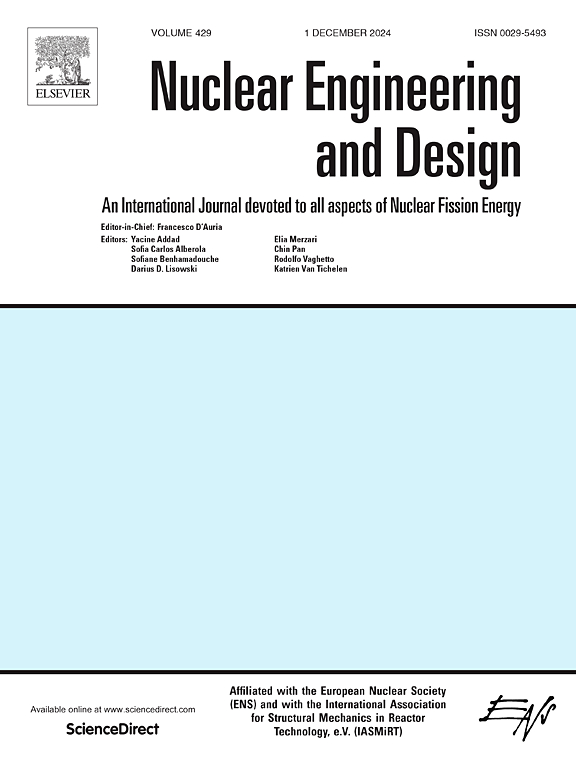Dynamic study of a steam Rankine cycle using CATHARE-3 system thermal-hydraulic code: Application to Superphenix fast reactor
IF 1.9
3区 工程技术
Q1 NUCLEAR SCIENCE & TECHNOLOGY
引用次数: 0
Abstract
There is a growing interest for innovative power conversion systems for nuclear power plants in the context of the decarbonization of the energy mix. This motivates the need of dynamic models of Rankine cycle to be integrated in conception and safety analysis. In this paper, a simplified version of the steam Rankine cycle of the French sodium-cooled fast reactor Superphenix is modeled using the thermal–hydraulic code CATHARE-3. This completes previous works on the modeling of the primary and secondary circuits of this reactor with CATHARE and enables the simulation of the entire power plant. In the first part, parametric studies of the Rankine cycle enable the computation of the gross efficiency as a function of cooling water temperature and as a function of the power load. In the second part, transient simulations are performed. The regulations of the Rankine cycle are implemented in order to simulate a load following scenario. Then, the Rankine cycle is coupled with the CATHARE-3 models of the primary and the secondary sodium circuits (including the neutron point kinetics model for the core). Free dynamics scenarios are simulated: a step variation of the turbine admission valve and a step variation of the cooling water flow rate.
求助全文
约1分钟内获得全文
求助全文
来源期刊

Nuclear Engineering and Design
工程技术-核科学技术
CiteScore
3.40
自引率
11.80%
发文量
377
审稿时长
5 months
期刊介绍:
Nuclear Engineering and Design covers the wide range of disciplines involved in the engineering, design, safety and construction of nuclear fission reactors. The Editors welcome papers both on applied and innovative aspects and developments in nuclear science and technology.
Fundamentals of Reactor Design include:
• Thermal-Hydraulics and Core Physics
• Safety Analysis, Risk Assessment (PSA)
• Structural and Mechanical Engineering
• Materials Science
• Fuel Behavior and Design
• Structural Plant Design
• Engineering of Reactor Components
• Experiments
Aspects beyond fundamentals of Reactor Design covered:
• Accident Mitigation Measures
• Reactor Control Systems
• Licensing Issues
• Safeguard Engineering
• Economy of Plants
• Reprocessing / Waste Disposal
• Applications of Nuclear Energy
• Maintenance
• Decommissioning
Papers on new reactor ideas and developments (Generation IV reactors) such as inherently safe modular HTRs, High Performance LWRs/HWRs and LMFBs/GFR will be considered; Actinide Burners, Accelerator Driven Systems, Energy Amplifiers and other special designs of power and research reactors and their applications are also encouraged.
 求助内容:
求助内容: 应助结果提醒方式:
应助结果提醒方式:


